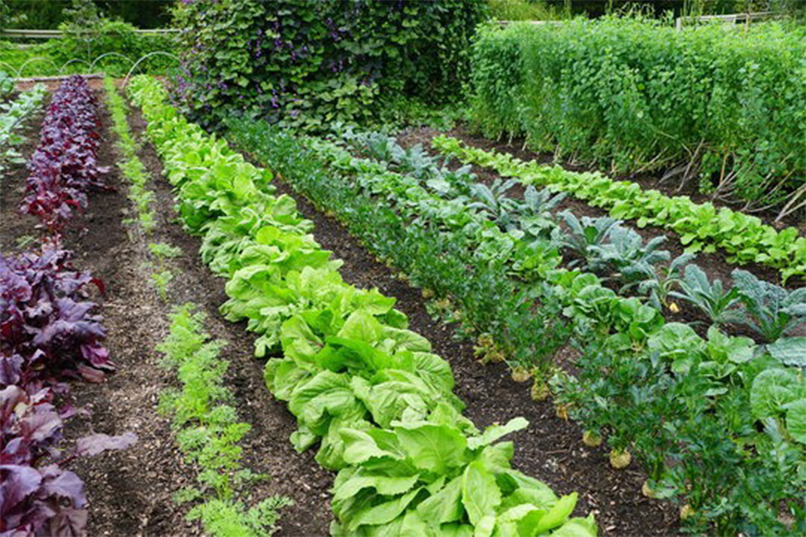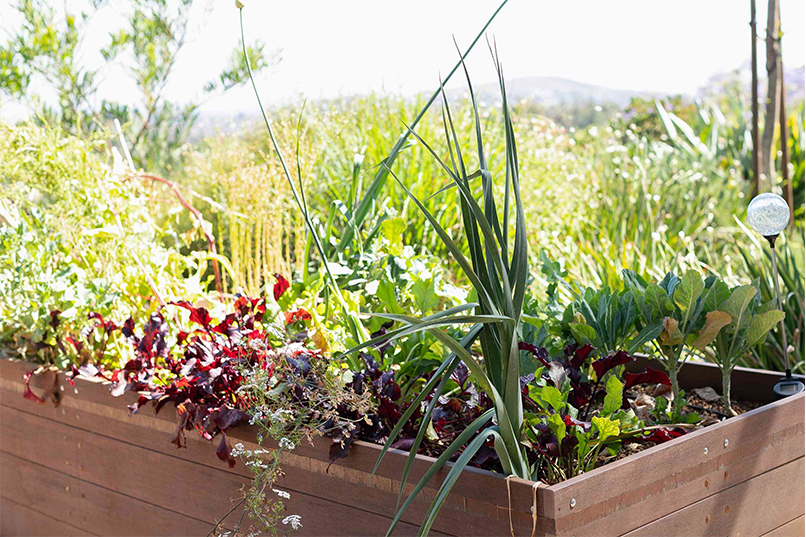Vegetable gardening is a popular and rewarding hobby for many people. However, even experienced gardeners can make mistakes that can negatively impact their garden. In this article, we will discuss some of the most common vegetable gardening mistakes and how to avoid them.
Choosing the wrong location
One of the most important factors for a successful vegetable garden is choosing the right location. Many gardeners make the mistake of choosing a spot that doesn’t receive enough sunlight. Vegetables need at least 6-8 hours of direct sunlight each day to thrive. Make sure to choose a location that is not shaded by trees or buildings and gets plenty of sunlight.
Another common mistake is choosing a spot with poor drainage. Vegetables need well-draining soil to prevent water from pooling around their roots, which can lead to root rot. To avoid this, choose a location that is slightly elevated or has good drainage.

Not preparing the soil
Another mistake that many gardeners make is not preparing the soil before planting. Soil preparation is essential for a healthy garden. Vegetable plants need fertile soil that is rich in nutrients and organic matter. Before planting, loosen the soil and mix in compost or other organic matter to improve soil quality.
Overwatering or underwatering
Watering is essential for the growth of vegetable plants, but it’s easy to overwater or underwater them. Overwatering can lead to root rot, while underwatering can cause plants to wilt and die.
To avoid overwatering, make sure the soil is dry to the touch before watering. Use a moisture meter to check the soil’s moisture level if you’re unsure. Water deeply and less frequently, rather than watering lightly and frequently. This will encourage the roots to grow deeper and stronger.
Planting too early or too late
Planting at the wrong time can also be a mistake. If you plant too early, the plants may be damaged by late frosts or cold weather. If you plant too late, the plants may not have enough time to mature before the first frost.
To avoid this, research the best time to plant each vegetable in your area. This will vary depending on your climate and growing zone. You can also consult with your local nursery or cooperative extension service for advice.
Crowding plants
Another common mistake is overcrowding plants. It can be tempting to plant as many vegetables as possible in a small space, but this can lead to poor growth and reduced yields. Plants need enough space to grow and access to sunlight and nutrients.
To avoid overcrowding, follow the recommended spacing guidelines for each vegetable plant. This information is usually included on the seed packet or plant label. You can also research online or consult with a gardening expert.
Failing to rotate crops
Crop rotation is an essential practice for maintaining soil health and preventing the buildup of pests and diseases. Many gardeners make the mistake of planting the same vegetables in the same spot year after year. This can lead to a depletion of nutrients in the soil and an increase in pests and diseases.
To avoid this, rotate your crops each year. This means planting different vegetables in different spots each year. For example, if you plant tomatoes in one spot one year, plant them in a different spot the next year.

Neglecting pest control
Pest control is essential for a healthy garden. Many gardeners make the mistake of neglecting pest control or waiting too long to address pest problems. This can lead to damage or destruction of crops.
To avoid this, inspect your garden regularly for signs of pests. Use natural methods of pest control, such as companion planting, crop rotation, and handpicking pests. You can also use organic pest control products if necessary.
Failing to fertilize properly
Fertilizing is important to provide your vegetable plants with the necessary nutrients to grow and produce healthy crops. However, fertilizing too much or too little can be a mistake. Over-fertilizing can lead to burned roots and damage to the plants, while under-fertilizing can result in stunted growth and reduced yields.
To avoid this, research the specific nutrient requirements for each vegetable plant and use a balanced fertilizer. It’s also important to follow the recommended application rates and frequency.
Not using mulch
Mulch is a layer of material placed on top of the soil to help retain moisture, suppress weeds, and regulate soil temperature. However, many gardeners neglect to use mulch, which can lead to increased water evaporation and weed growth.
To avoid this, apply a layer of organic mulch, such as straw or shredded leaves, around your vegetable plants. This will help retain moisture in the soil and suppress weed growth.
Not pruning properly
Pruning is the process of removing parts of the plant to promote healthy growth and increased yields. However, many gardeners make the mistake of not pruning their vegetable plants properly or at all.
To avoid this, research the specific pruning requirements for each vegetable plant. This will vary depending on the plant and the desired outcome. For example, pruning tomato plants can increase airflow and reduce the risk of disease, while pruning pepper plants can promote increased fruit production.
Ignoring the pH level of the soil
The pH level of the soil is an important factor in determining the health and growth of your vegetable plants. However, many gardeners neglect to test and adjust the pH level of their soil.
To avoid this, test your soil’s pH level regularly using a soil pH test kit. This will help you determine if the soil is too acidic or alkaline and whether it needs to be adjusted. You can adjust the pH level by adding lime to increase alkalinity or sulfur to increase acidity.
Not providing support for plants
Many vegetable plants, such as tomatoes and beans, require support to grow upright and produce healthy crops. However, many gardeners make the mistake of not providing support for their plants, which can lead to stunted growth and reduced yields.
To avoid this, research the specific support requirements for each vegetable plant. This may include using stakes, cages, or trellises to support the plants as they grow.

Not using proper pruning tools
Pruning can be a valuable practice in promoting healthy growth and increased yields. However, many gardeners make the mistake of using improper pruning tools, such as scissors or shears, which can damage the plant.
To avoid this, use proper pruning tools, such as pruning shears or loppers, to make clean cuts without damaging the plant. It’s also important to clean and sanitize your pruning tools after each use to prevent the spread of diseases.
Neglecting to weed regularly
Weeds can be a major problem in vegetable gardens, competing with your plants for nutrients and water. However, many gardeners neglect to weed regularly, which can lead to reduced yields and increased pest and disease problems.
To avoid this, weed your garden regularly using a hoe or hand pulling. It’s important to remove weeds before they can go to seed and spread throughout your garden. Mulching can also help suppress weed growth.
In conclusion, vegetable gardening can be a rewarding and enjoyable hobby, but it requires proper planning, preparation, and care. By avoiding these common mistakes, you can ensure a healthy and productive garden. Remember to choose the right location, prepare the soil, water properly, plant at the right time, space your plants correctly, rotate your crops, control pests, fertilize properly, use mulch, prune properly, test







